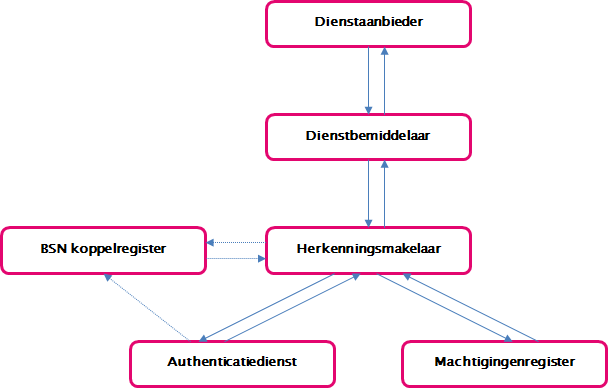

This paragraph describes the (guidelines for) interface(s) between the Dienstbemiddelaar (DB) (Service Intermediary) and the Dienstaanbieder (DA) (Service Supplier). The interface between a DB and a DA is considered a machine to machine interface. The implementation details of this interface will always be specified by the Dienstaanbieder. In order to facilitate adoption, |
-Declarations can be used to ‘add’ security (more precise authorization) to a message by applying them as Authorization/Security Tokens. To be considered valid Authorization tokens, these declarations have to conform to certain conditions. These conditions concern the concepts of ‘meaningful consent’ and the proof of this consent (to establish ‘non-repudiation’).
With meaningful consent we mean that the user has to reach a well informed conscience decision concerning whether or not to consume the service. For transactions with high juridical or legal consequences the process to establish this ‘well informedness’ will have to meet higher standards than for user actions with a lower impact. For example, accessing relative harmless information like ‘last time visited’, might require a very implicit informedness like ‘You are logging on to ..’. However, transactions for services with significant implications will require a more formal 'informedness' and might even require independent Signature Services.
When the user has reached an informed decision, non-repudiation about this decision has to be achieved. The preferred way to achieve this is to associate;
The -Declarations give insight in who is consuming the service, on whose behalf, including information which the Dienstaanbieder can use to conduct its authorization decision.
The specific Request message used to consume the service conforms to the input for the (web) service as specified by the Dienstaanbieder, and therefore does not have to be in a human readable form. This technical message however, should be no more than a perfect transformation of a users intended action into a format as understood by the Dienstaanbieder.
This ‘service’/intended users action could be anything i.e. ‘logging on’, ‘retrieving last time visited’, ‘declare taxes’, ‘request permit’, ‘retrieve information from a portal’ etc. The transformed technical message could be anything from a specific SOAP or REST message, to PDF or ByteArray etc.
The means on how this request message has been established/constructed should be present to provide a provable and accountable link between the first 2 pieces of information; the user and its intended user action, and the resulting technical translation used to consume the service.
The above results in the following requirements:
The DA and DB MUST ensure that security of the interface DB-DA is appropriate for the security needs and risk profile of the service. The security of the interface DB-DA SHOULD ensure confidentiality, integrity and mutual authentication of the communication. It is therefore recommended that: